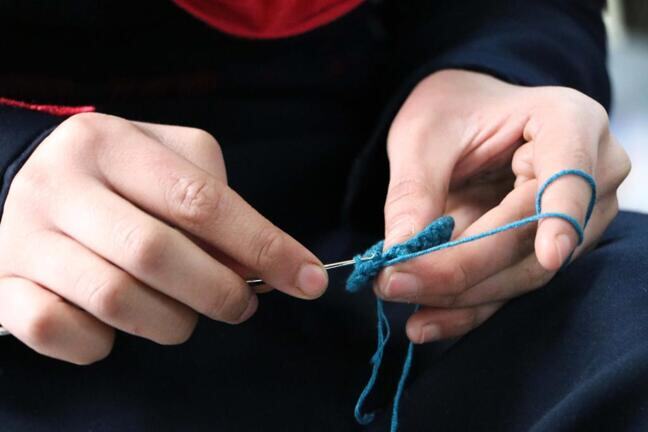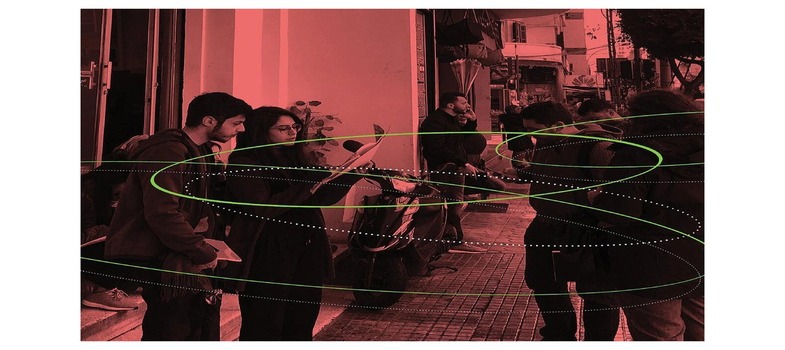2.11 Remote research during COVID-19
As we saw in Step 2.10 community based researchers at MAPS conducted a participatory research project during the lockdown between June and August. This research is based on a project titled Women’s Empowerment Agency through visual expression and dialogue.
Weaved is a pilot project involving Syrian refugee and Lebanese artists and women who are part of a massive economic empowerment initiative called the Crochet Community Collective, which provides artists and women with monthly incomes.

The overall aim of this research was to capture women’s daily experiences and the impact of economic empowerment and crochet on their lives and identity. The project enabled women to shape their narratives on their own terms through a participatory method called photo voice. This participatory project was actually inspired by the lockdown in order to create a project to conduct research while also keeping the community connected during such a difficult time. Natalie Garland a Partnerships & Research Manager at MAPS in Bekaa, Lebanon mentioned several challenges that her team faced conducting this project. Nevertheless, she also found creative ways to overcome them:
“In the end, the project was really so successful and so special because we were remote. I think that the most poignant part about this project was how the women really looked forward to the sessions as a constructive and positive way of spending their time during lockdown”.
Some of the key challenges that she shared was firstly, keeping participants engaged virtually because of the unstable Internet connection in Lebanon was a huge barrier. In addition, many of the artists and women do not have access to Internet at home or do not have a smartphone where they could participate in Zoom each week.
Another challenge was that self-expression through journaling and photography is a new concept that took time to feel comfortable with and to understand. In the beginning, the women were confused with the photography assignments and needed a lot of guidance about what to photograph and how to express themselves through this tool.
Natalie goes on by mentioning another challenge that they faced during the project, which is the lack of access to professional photography training because of the lockdown. This meant that the photography quality was generally quite low. Natalie and her team did not anticipate was how women who were living in more difficult or smaller living environments or women who had several young children, participated less because it was very hard for them to find the privacy and the quiet space which this project required.
Some of the solutions for these challenges included:
- Making recordings of Zoom sessions that were distributed to the participants via WhatsApp groups so that women could watch the sessions when it was most convenient for them.
- Conducting short WhatsApp interviews with the participants, to understand deeper meanings, to uncover more interesting nuances in their lives and perspectives. And this was especially important for the women who were unable to participate a lot during the sessions.
- Providing additional support and tailored workshops around common knowledge gaps that they observed in photography skills. They also created an office, hour sessions, where the women could log on and brainstorm what to photograph and brainstorm different creative ways of using their phones to take pictures.
- Constantly listening to the community and to get feedback to improve the project as you’re going along. Natalie stressed how important this was for any participatory project.
At the end of the project, Natalie noticed how this research helped strengthen social networks and really reduce this deep sense of isolation during such a difficult time because of the lockdown and also because of the many layers of crises in Lebanon. The participants really needed an outlet to speak openly and to feel listened to and to feel supported.
A really significant take away from this project was realizing how remote research requires a unique adaptive approach, which is leveraging the use of a range of social media platforms. The participants expressed so much pride in seeing people liking and commenting and engaging with their photographs that were posted on Instagram. And it became a fun way to keep the crochet community connected and engaged. Whether it was using Instagram, Zoom or WhatsApp, a mixture of these different platforms was a kind of leverage.
To conclude, Natalie realized that WEAVED is by nature a project in constant motion, it changes each day to become relevant to the current situation and current needs. Discussions were shaped around daily occurrences and topics for the following weeks were design week by week relative to the discussions and photographs of the previous sessions. The WEAVED adaptive methodology requires heightened awareness and connection with the local community, which is what ultimately makes this approach so special because it evolves around listening and observing and responding to the community interests and concerns.
Over to you
Did you use video tools like Zoom or Teams or apps like Whatsapp for research during the Covid-19 pandemic? Do you think it is feasible to do research this way? Is there anything else researchers should bear in mind when conducting remote research? Share your thoughts in the forum.
